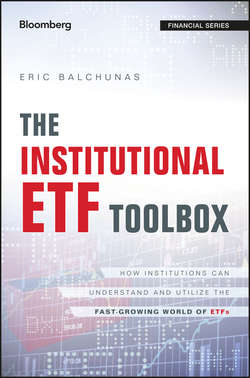Читать книгу The Institutional ETF Toolbox - Balchunas Eric - Страница 19
На сайте Литреса книга снята с продажи.
SECTION I
The ETF Phenomenon
CHAPTER 1
Why Are ETFs So Popular?
Flexibility
ОглавлениеFlexibility is huge to institutions. This is what the book is about. See, there are many ways ETFs can be used besides a long-term investment. This book covers about a dozen of those usages. You can go long or short with an ETF. You can use them as portfolio adjustment mechanisms. You can do tax-loss harvesting with them. You can use them as placeholders or lend them out to generate income or use options with them. The list goes on.
“We use ETFs in a lot of different ways here. And flexibility is really the nice thing.”
Michael Brakebill, Tennessee Consolidated Retirement System
ETFs also allow investors to access both beta (market return) and alpha (excess return). On one hand, ETFs can be used to grab as much beta as possible for those who simply want to own the market(s). Sort of like the aforementioned Buffett Special portfolio. This is a worthy pursuit for sure, especially for buy-and-hold investors.
But for those investors looking to find alpha, or excess return above the market, ETFs are useful for that, too. Alpha can be generated in two main ways using passive ETFs. First is by organizing your ETFs in such a way that you overweight or underweight different sectors, countries, or factors that you think will outperform. Many have called this “alpha through beta.” This is what ETF strategists have built a $100 billion industry doing.
The other way is through buying an ETF that is designed to try and generate alpha on its own, either through different weighting schemes – frequently called “smart beta” – and/or actively managed ETFs. We will discuss this in great detail in Chapter 7.
